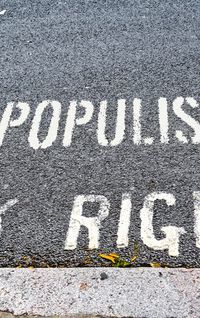Sovereigns, supranationals and agencies rushed to the bond market this year to finance the fight against the biggest social issue of the moment: Covid-19. If ever there was a time for the social bond market to take centre stage, then this is it, and it is SSAs that will drive its development.
Sovereigns, supranationals and agencies were quick to take advantage of an improved bond issuance tone in March, embarking on the task of raising the huge quantities of capital needed to address the short and long-term implications of Covid-19. Financing the response had to begin as soon as possible and pandemic-linked debt from SSAs soon appeared in a number of guises: labelled social and sustainable bonds, Covid-themed bonds and conventional paper.
“There’s been an increase in social bond-type activity as economies have fallen,” said Olivier Vion, global head of DCM, public sector origination, at SG CIB.
Deals met with strong levels of oversubscription, with linkage to the crisis generating additional attraction.
“It’s difficult to say that deals have been bought exclusively by socially responsible investors amongst the general increase in demand for fixed income, but the link to fighting the virus has certainly helped mobilise investors,” said Vion.
With Covid-19 above all a social issue, social bonds are in prime position to lead the financing response.
“Social bonds are the right product at the right time,” said ICMA's Nicholas Pfaff, where he is managing director, market practice and regulatory policy, head of sustainability and secretary of the Green Bond Principles and the Social Bond Principles. “Not only can proceeds target health and employment but they provide an effective and established means of communicating the impact of an investment through reporting.”
Social bonds are a way of financing projects addressing a specific social issue and realising a positive outcome within a target population. To claim the social bond label, issuers must conform to the four pillars of the Social Bond Principles: a specified use of proceeds; a process for project selection and evaluation; the effective management of proceeds; and a system of reporting. Independent external verification of the process is also a requirement. Labelled sustainability bonds conform to Green Bond Principles or SBP.
Updated guidance to the SBP in response to Covid-19 broadened the scope of eligible projects to reflect that seeking to achieve positive social outcomes for target populations may also address the needs of the general population.
Those borrowers with established processes and frameworks were ideally placed to begin funding their war chests.
“For some of the borrowers with a social bond framework already in place, it has been relatively straightforward to launch Covid-19-related issuance,” said Jacob Michaelsen, head of sustainable finance advisory at Nordea Markets. “It’s largely been a question of plug in and play.”
There was a surge in social bond issuance as a consequence. According to Refinitiv data, labelled social bond volume in 2020 to May 11 totalled US$18.3bn, eclipsing the US$3.7bn total for 2019. Some 77% of this year’s deals were issued by SSAs. Likewise, sustainability bond issuance also increased impressively (US$33.88bn versus US$4.52bn in 2019, with SSAs representing 74% of the 2020 total).
NEED FOR SPEED
Labelled social and sustainability bonds formed a solid base for raising pandemic-related capital, but not all issuers took that route. Some opted to launch deals having no framework at all, and with valid reasons.
“It often takes some lead time for a company to develop the appropriate framework for a social bond,” said Paul Davies, partner at Latham & Watkins. “That framework tells the story of how the company’s business activities relate to sustainability topics and, at its best, relates to the company’s underlying sustainability strategy.”
In crisis conditions, however, the need to raise capital quickly outweighs the attraction of establishing the relevant framework.
Nordic Investment Bank is one such issuer that decided against taking the social bonds route, choosing instead to establish its own response bond framework to address the Covid-related demands of its shareholders.
“NIB didn’t have a social bond framework in place, so we developed our response bonds programme,” said Jens Hellerup, head of funding and investor relations at NIB. “We can issue use-of-proceeds bonds, which are like green bonds or social bonds. All the reporting is in place but there is no external verifier. Establishing a framework that was fully aligned with the Social Bond Principles would have taken too long. We needed to act quickly.” It has launched two response bonds.
As well as the time taken to establish an aligned framework, there were concerns that short-term projects and financing its position as a stabilising influence during times of economic crisis would not be compatible with the principles.
“We weren’t sure that all of our short-term issues would comply long-term with the social bond framework. We didn’t want to be accused in the future of potentially being involved in social washing,” said Hellerup. “So as not to jeopardise the integrity of the SBP, nor that of its own long-term objectives, NIB decided to use the label 'response bond' as opposed to a social bond.”
BRANDED CREDIBILITY
The approach taken by NIB and similar issuers in stipulating that bonds do not align to the SBP is seen as key in maintaining the credibility of social bonds.
“The Social Bond Principles were developed to ensure the integrity of the market,” said Adriana Cruz Felix, sustainable finance research manager LatAm, Vigeo Eiris. “The International Capital Market Association has stated that if a bond issuance aims to be labelled as a social bond then it must be aligned with the four core components of these principles.”
And the strict alignment to these principles is partly responsible for the different pandemic bond brands.
“An issuer can choose to call a bond anything it likes, and we have seen a proliferation of labels in the market. As long as the issuer is transparent and doesn’t use the social bond label without committing to the tenets of the Social Bond Principles, then integrity in the market should be maintained,” said Matthew Kuchtyak, sustainable finance analyst at Moody’s.
The absence of label does not necessarily exclude the participation of the largest ethical investors, either. They have their own teams of researchers in place, their own screening processes and their own approach to investing.
“As long as there is transparency, positive impact and reporting, then there is no need for a label,” said Noelle Cazalis of the Rathbone Ethical Bond Fund. “We do our own research and any investment must pass internal criteria and screening.”
Nevertheless, labels offer security to investors in an expanding market, and there are concerns that the rush to market with pandemic-themed bonds brings with it some longer-term sustainability issues.
“There are risks from a broader perspective,” said Chris Wigley, specialist ESG fixed income portfolio manager. “For instance, money being raised to fight Covid might be used in part to support the fossil fuel industry.”
Transparency and reputation risk are, perhaps, the main forces that will maintain the integrity of the market.
“It is inevitable that financings that target a broader cross-section of economic activity will be less supportive of sustainability priorities other than Covid-19 response,” said Aaron Franklin, associate and global coordinator sustainable capital markets with Latham & Watkins. “But we should distinguish that from attempting to mislead the market through a social bond label. It is overly simplistic to allege bad faith for any sustainable financing involving business activities that have negative impacts on the environment or social issues. The market is best served in this regard by clear disclosure by issuers that allows investors to make educated decisions.”
SOCIAL CLIMBING
The social bond market has already broken records this year and Moody’s expects social and sustainability bonds issuance to reach US$100bn in 2020, although that number could grow again, depending on the length and depth of the pandemic’s impact. And it is hoped that the market’s short-term reaction to the crisis is a sign that it is ready to accept a social mandate longer term.
“Fighting against Covid has given the market for social bonds a lift,” said Wigley. “This will bring in other issuers as they realise the importance of addressing a whole range of social projects and the willingness of investors to support those efforts. In the long term, the social bond market could be bigger than that for green bonds.”
There is no doubt as to the importance of SSAs in its development.
“Most social bonds this year will come from MDBs, reflecting the focus on coronavirus response efforts,” said Kuchtyak. “It may not all be related to Covid-19, but it will fulfil a similar economic challenge. After all, that’s what these institutions are set up to do.”
Sovereigns may not make such an immediate impact.
“Sovereigns are typically slower to act than supranationals, given the greater levels of process and broader stakeholder groups to be considered. Supranationals generally have a development mandate, whereas sovereigns have a more holistic and politically determined set of priorities,” said Franklin.
Social bonds might not be the right vehicle for them to use in an emergency, in any case.
“Targeting use of proceeds is difficult for sovereigns,” said Vion. “That’s why we see sovereigns funding a budget deficit with bonds linked to fighting the negative impact of the crisis rather than labelled bonds. Dedicated agencies are best positioned to target specific populations and projects related to Covid-19 and we’re likely to see more issues from this part of the market.”
The crisis has highlighted to investors and issuers the relationship between bond markets and improving lives, and it is that realisation, and the communication around it, that is hoped to have a lasting influence.
To see the digital version of this report, please click here
To purchase printed copies or a PDF of this report, please email gloria.balbastro@refinitiv.com
![]()




























